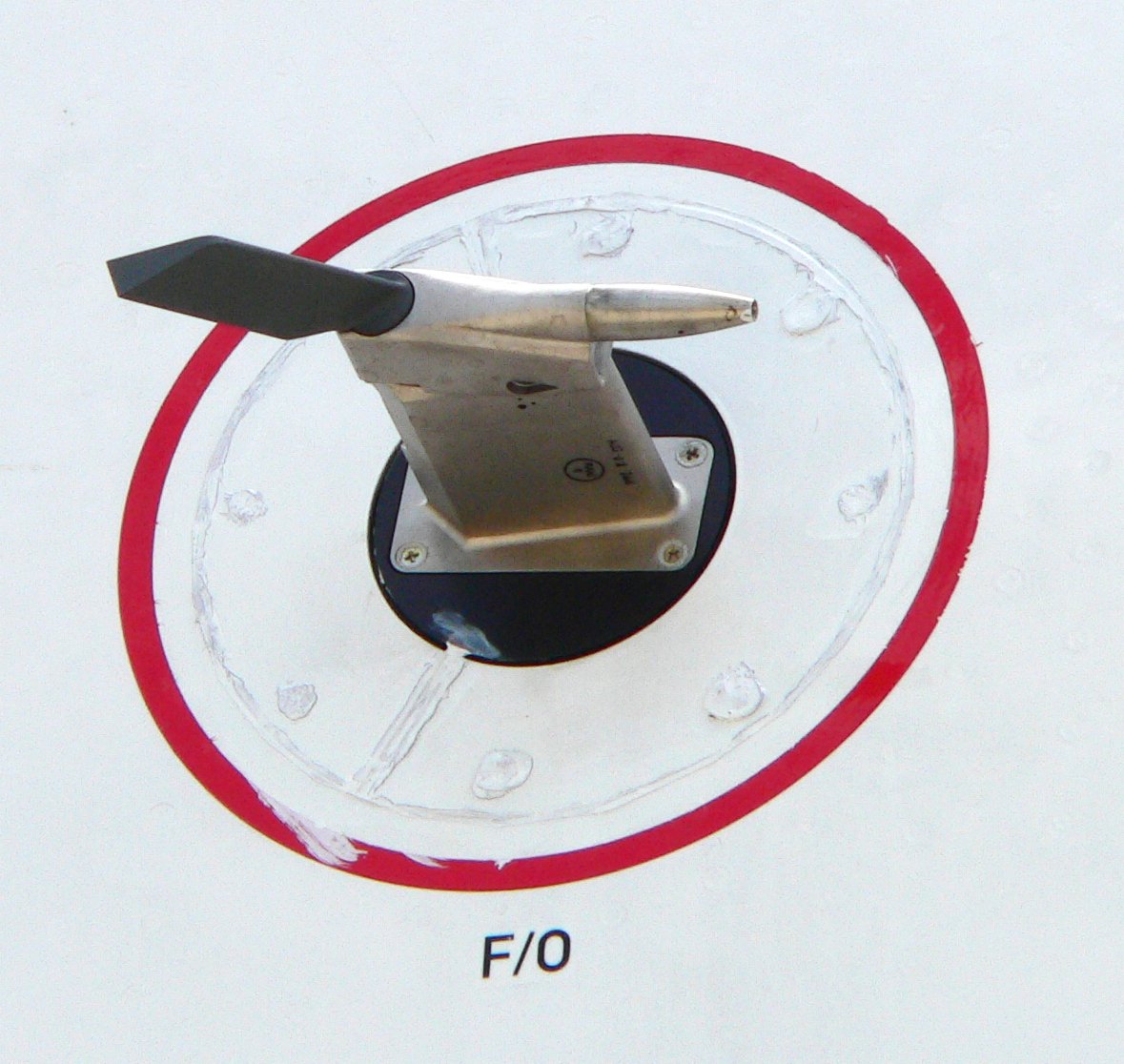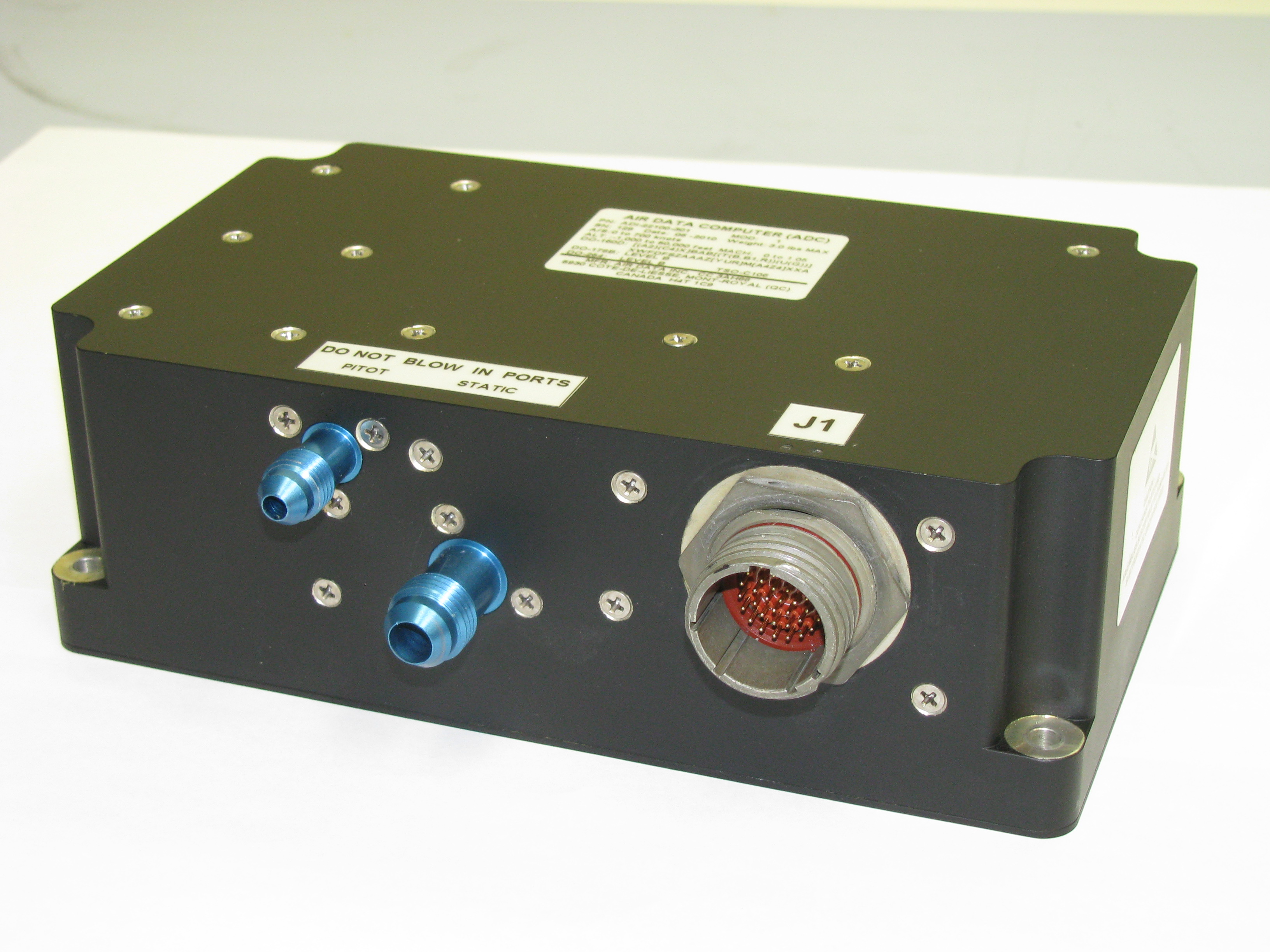|
Pitot-static
A pitot-static system is a system of pressure-sensitive instruments that is most often used in aviation to determine an aircraft's airspeed, Mach number, altitude, and altitude trend. A pitot-static system generally consists of a pitot tube, a static port, and the pitot-static instruments. Other instruments that might be connected are air data computers, flight data recorders, altitude encoders, cabin pressurization controllers, and various airspeed switches. Errors in pitot-static system readings can be extremely dangerous as the information obtained from the pitot static system, such as altitude, is potentially safety-critical. Several commercial airline disasters have been traced to a failure of the pitot-static system. Pitot-static pressure The pitot-static system of instruments uses the principle of air pressure gradient. It works by measuring pressures or pressure differences and using these values to assess the speed and altitude. These pressures can be measured ei ... [...More Info...] [...Related Items...] OR: [Wikipedia] [Google] [Baidu] |
Pitot Tube
A pitot ( ) tube (pitot probe) measures fluid flow velocity. It was invented by a French engineer, Henri Pitot, in the early 18th century, and was modified to its modern form in the mid-19th century by a French scientist, Henry Darcy. It is widely used to determine the airspeed of aircraft; the water speed of boats; and the flow velocity of liquids, air, and gases in industry. Theory of operation The basic pitot tube consists of a tube pointing directly into the fluid flow. As this tube contains fluid, a pressure can be measured; the moving fluid is brought to rest (stagnates) as there is no outlet to allow flow to continue. This pressure is the stagnation pressure of the fluid, also known as the total pressure or (particularly in aviation) the pitot pressure. The measured stagnation pressure cannot itself be used to determine the fluid flow velocity (airspeed in aviation). However, Bernoulli's equation states: :Stagnation pressure = static pressure + dynamic pressure Whi ... [...More Info...] [...Related Items...] OR: [Wikipedia] [Google] [Baidu] |
Airspeed
In aviation, airspeed is the speed of an aircraft relative to the air. Among the common conventions for qualifying airspeed are: * Indicated airspeed ("IAS"), what is read on an airspeed gauge connected to a Pitot-static system; * Calibrated airspeed ("CAS"), indicated airspeed adjusted for pitot system position and installation error; * Equivalent airspeed ("EAS"), calibrated airspeed adjusted for compressibility effects; * True airspeed ("TAS"), equivalent airspeed adjusted for air density, and is also the speed of the aircraft through the air in which it is flying. Calibrated airspeed is typically within a few knots of indicated airspeed, while equivalent airspeed decreases slightly from CAS as aircraft altitude increases or at high speeds. With EAS constant, true airspeed increases as aircraft altitude increases. This is because air density decreases with higher altitude. The measurement and indication of airspeed is ordinarily accomplished on board an aircraft by an air ... [...More Info...] [...Related Items...] OR: [Wikipedia] [Google] [Baidu] |
Airspeed Indicator
The airspeed indicator (ASI) or airspeed gauge is a flight instrument indicating the airspeed of an aircraft in kilometers per hour (km/h), knots (kn), miles per hour (MPH) and/or meters per second (m/s). The recommendation by ICAO is to use km/h, however knots is currently the most used unit. The ASI measures the pressure differential between static pressure from the static port, and total pressure from the pitot tube. This difference in pressure is registered with the ASI pointer on the face of the instrument. Color-coded speeds and ranges The ASI has standard color-coded markings to indicate safe operation within the limitations of the aircraft. At a glance, the pilot can determine a recommended speed (V speeds) or if speed adjustments are needed. Single and multi-engine aircraft have common markings. For instance, the green arc indicates the normal operating range of the aircraft, from ''V''S1 to ''V''NO. The white arc indicates the flap operating range, ''V''SO to ''V ... [...More Info...] [...Related Items...] OR: [Wikipedia] [Google] [Baidu] |
Air Data Computer
An air data computer (ADC) or central air data computer (CADC) computes altitude, vertical speed, air speed, and Mach number from pressure and temperature inputs. It is an essential avionics component found in modern aircraft. This computer, rather than individual instruments, can determine the calibrated airspeed, Mach number, altitude, and altitude trend data from an aircraft's pitot-static system. In some very high speed aircraft such as the Space Shuttle, equivalent airspeed is calculated instead of calibrated airspeed. Air data computers usually also have an input of total air temperature. This enables computation of static air temperature and true airspeed. In Airbus aircraft the air data computer is combined with altitude, heading and navigation sources in a single unit known as the Air Data Inertial Reference Unit (ADIRU) this has now been replaced by the Global Navigation Air Data Inertial Reference System (GNADIRS). On the Embraer Embraer E-Jet family the concept has ... [...More Info...] [...Related Items...] OR: [Wikipedia] [Google] [Baidu] |
Airtight
A hermetic seal is any type of sealing that makes a given object airtight (preventing the passage of air, oxygen, or other gases). The term originally applied to airtight glass containers, but as technology advanced it applied to a larger category of materials, including rubber and plastics. Hermetic seals are essential to the correct and safe functionality of many electronic and healthcare products. Used technically, it is stated in conjunction with a specific test method and conditions of use. Uses Some kinds of packaging must maintain a seal against the flow of gases, for example, packaging for some foods, pharmaceuticals, chemicals and consumer goods. The term can describe the result of some food preservation practices, such as vacuum packing and canning. Packaging materials include glass, aluminum cans, metal foils, and gas impermeable plastics. Some buildings designed with sustainable architecture principles may use airtight technologies to energy conservation, conserve ... [...More Info...] [...Related Items...] OR: [Wikipedia] [Google] [Baidu] |
Fuselage
The fuselage (; from the French ''fuselé'' "spindle-shaped") is an aircraft's main body section. It holds crew, passengers, or cargo. In single-engine aircraft, it will usually contain an engine as well, although in some amphibious aircraft the single engine is mounted on a pylon attached to the fuselage, which in turn is used as a floating hull. The fuselage also serves to position the control and stabilization surfaces in specific relationships to lifting surfaces, which is required for aircraft stability and maneuverability. Types of structures Truss structure This type of structure is still in use in many lightweight aircraft using welded steel tube trusses. A box truss fuselage structure can also be built out of wood—often covered with plywood. Simple box structures may be rounded by the addition of supported lightweight stringers, allowing the fabric covering to form a more aerodynamic shape, or one more pleasing to the eye. Geodesic construction Geo ... [...More Info...] [...Related Items...] OR: [Wikipedia] [Google] [Baidu] |
Aircraft Flight Control System
A conventional Fixed-wing aircraft, fixed-wing aircraft flight control system consists of flight control surfaces, the respective cockpit controls, connecting linkages, and the necessary operating mechanisms to control an aircraft's direction in flight. Aircraft engine controls are also considered as flight controls as they change speed. The fundamentals of aircraft controls are explained in flight dynamics (fixed-wing aircraft), flight dynamics. This article centers on the operating mechanisms of the flight controls. The basic system in use on aircraft first appeared in a readily recognizable form as early as April 1908, on Louis Blériot's Blériot VIII pioneer-era monoplane design. Cockpit controls Primary controls Generally, the primary cockpit flight controls are arranged as follows:Langewiesche, WolfgangStick and Rudder: An Explanation of the Art of Flying McGraw-Hill Professional, 1990, , . * a Yoke (aircraft), control yoke (also known as a control column), centre s ... [...More Info...] [...Related Items...] OR: [Wikipedia] [Google] [Baidu] |
Diaphragm (mechanical Device)
In mechanical engineering, mechanics, a diaphragm is a sheet of a semi-flexible material anchored at its periphery and most often round in shape. It serves either as a barrier between two chambers, moving slightly up into one chamber or down into the other depending on differences in pressure, or as a device that vibrates when certain frequencies are applied to it. A diaphragm pump uses a diaphragm to pump a fluid. A typical design is to have air on one side constantly vary in pressure, with fluid on the other side. The increase and decrease in volume caused by the action of the diaphragm alternately forces fluid out the chamber and draws more fluid in from its source. The action of the diaphragm is very similar to the action of a plunger with the exception that a diaphragm responds to changes in pressure rather than the mechanical force of the shaft. A diaphragm pressure tank is a tank which has pressurant sealed inside on one side of the diaphragm. It is favored in certain appl ... [...More Info...] [...Related Items...] OR: [Wikipedia] [Google] [Baidu] |
System
A system is a group of Interaction, interacting or interrelated elements that act according to a set of rules to form a unified whole. A system, surrounded and influenced by its environment (systems), environment, is described by its boundaries, structure and purpose and expressed in its functioning. Systems are the subjects of study of systems theory and other systems sciences. Systems have several common properties and characteristics, including structure, function(s), behavior and interconnectivity. Etymology The term ''system'' comes from the Latin word ''systēma'', in turn from Greek language, Greek ''systēma'': "whole concept made of several parts or members, system", literary "composition"."σύστημα" Henry George Liddell, Robert Scott, ''A Greek–English Lexicon'', on Per ... [...More Info...] [...Related Items...] OR: [Wikipedia] [Google] [Baidu] |
Faa Altimeter
The Federal Aviation Administration (FAA) is the largest transportation agency of the U.S. government and regulates all aspects of civil aviation in the country as well as over surrounding international waters. Its powers include air traffic management, certification of personnel and aircraft, setting standards for airports, and protection of U.S. assets during the launch or re-entry of commercial space vehicles. Powers over neighboring international waters were delegated to the FAA by authority of the International Civil Aviation Organization. Created in , the FAA replaced the former Civil Aeronautics Administration (CAA) and later became an agency within the U.S. Department of Transportation. Major functions The FAA's roles include: *Regulating U.S. commercial space transportation *Regulating air navigation facilities' geometric and flight inspection standards *Encouraging and developing civil aeronautics, including new aviation technology *Issuing, suspending, or revoking ... [...More Info...] [...Related Items...] OR: [Wikipedia] [Google] [Baidu] |
Barometer
A barometer is a scientific instrument that is used to measure air pressure in a certain environment. Pressure tendency can forecast short term changes in the weather. Many measurements of air pressure are used within surface weather analysis to help find surface troughs, pressure systems and frontal boundaries. Barometers and pressure altimeters (the most basic and common type of altimeter) are essentially the same instrument, but used for different purposes. An altimeter is intended to be used at different levels matching the corresponding atmospheric pressure to the altitude, while a barometer is kept at the same level and measures subtle pressure changes caused by weather and elements of weather. The average atmospheric pressure on the earth's surface varies between 940 and 1040 hPa (mbar). The average atmospheric pressure at sea level is 1013 hPa (mbar). Etymology The word ''barometer'' is derived from the Ancient Greek (), meaning "weight", and (), meaning "measure ... [...More Info...] [...Related Items...] OR: [Wikipedia] [Google] [Baidu] |





